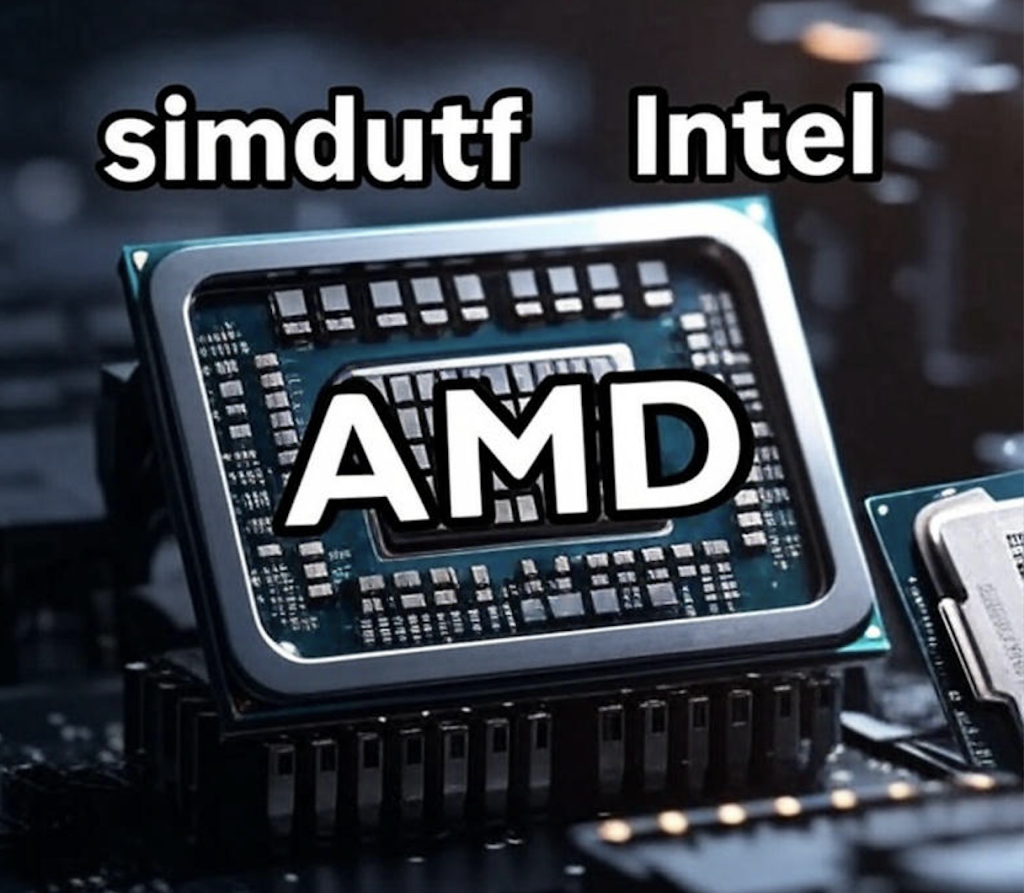
"Michael Larabel at Phoronix has a couple of articles on the new AMD processors. One of them is entitled AMD EPYC 9005 Brings Incredible Performance. The article is well worth reading. He finds that, compared with the prior AMD processor (with a Zen 4 microarchitecture), the AMD EPYC 9R4 is 1.6 times faster. In a second article, Michael compares the AMD processor with the corresponding Intel processor. He finds that the AMD processor is 1.6 times faster than the Intel processor."
"The simdutf library allows fast transcoding between UTF-8, UTF-16, and UTF-32 encodings, among other features. It is used by major browsers and JavaScript runtimes like Node.js or Bun. A common operation that matters is the conversion from UTF-16 to UTF-8. Internally, JavaScript relies on UTF-16, thus most characters use 2 bytes, whereas the Internet defaults on UTF-8 where characters can use between 1 and 4 bytes."
Processors split broadly into ARM (mobile) and x64 (Intel, AMD). Intel historically led server CPUs but is increasingly challenged. Amazon offers AMD Zen 5 EPYC 9R45 in r8a instances while Intel r8i instances use Xeon 6975P-C from the Granite Rapids family. Phoronix benchmarking reports the AMD EPYC 9R4 delivers roughly 1.6× speedup versus the prior Zen 4 and about 1.6× versus the comparable Intel part. The simdutf library provides fast transcoding among UTF-8, UTF-16, and UTF-32. JavaScript uses UTF-16 internally; surrogate pairs extend coverage beyond U+FFFF and map to four UTF-8 bytes.
Read at Daniel Lemire's blog
Unable to calculate read time
Collection
[
|
...
]